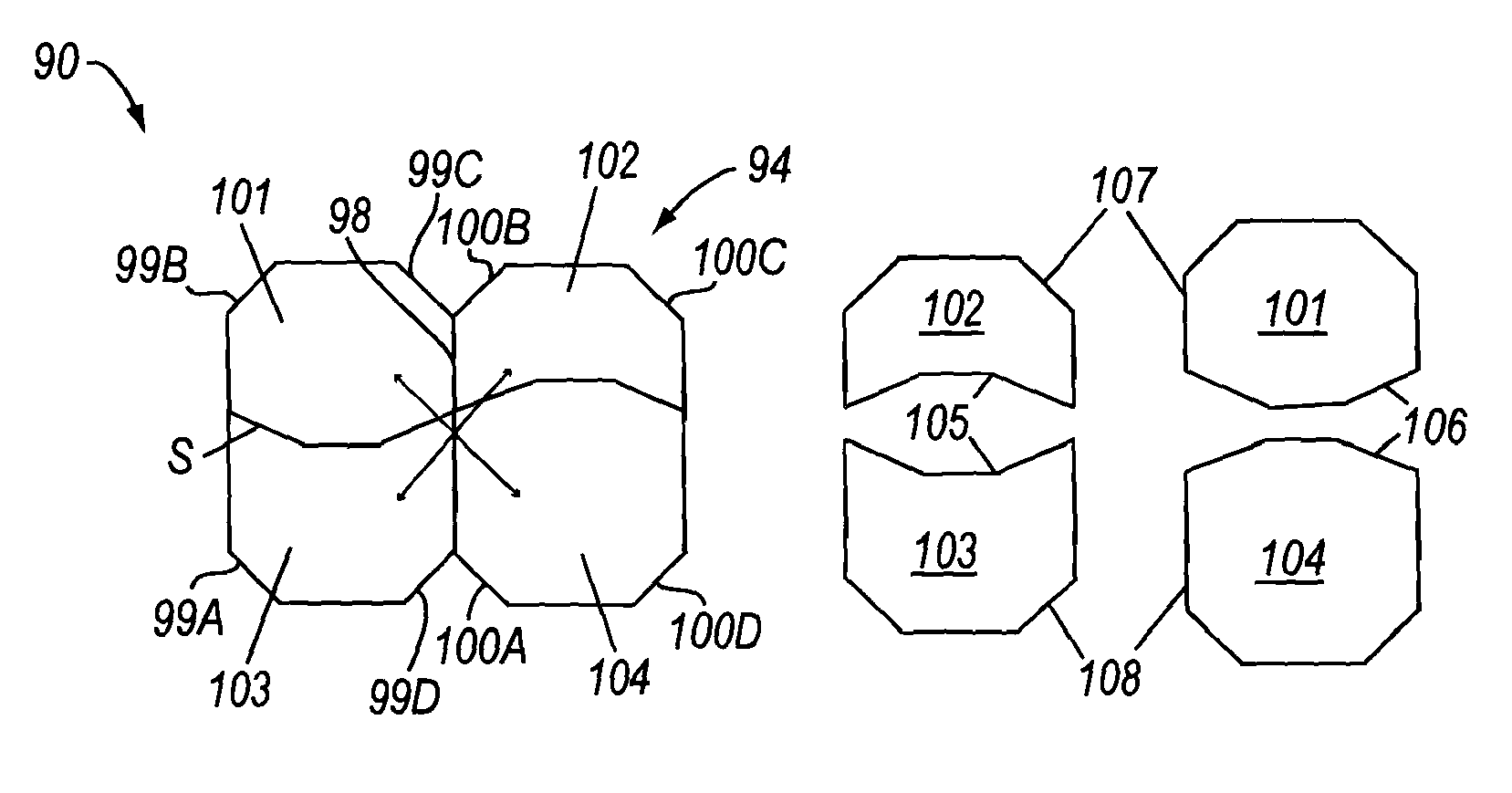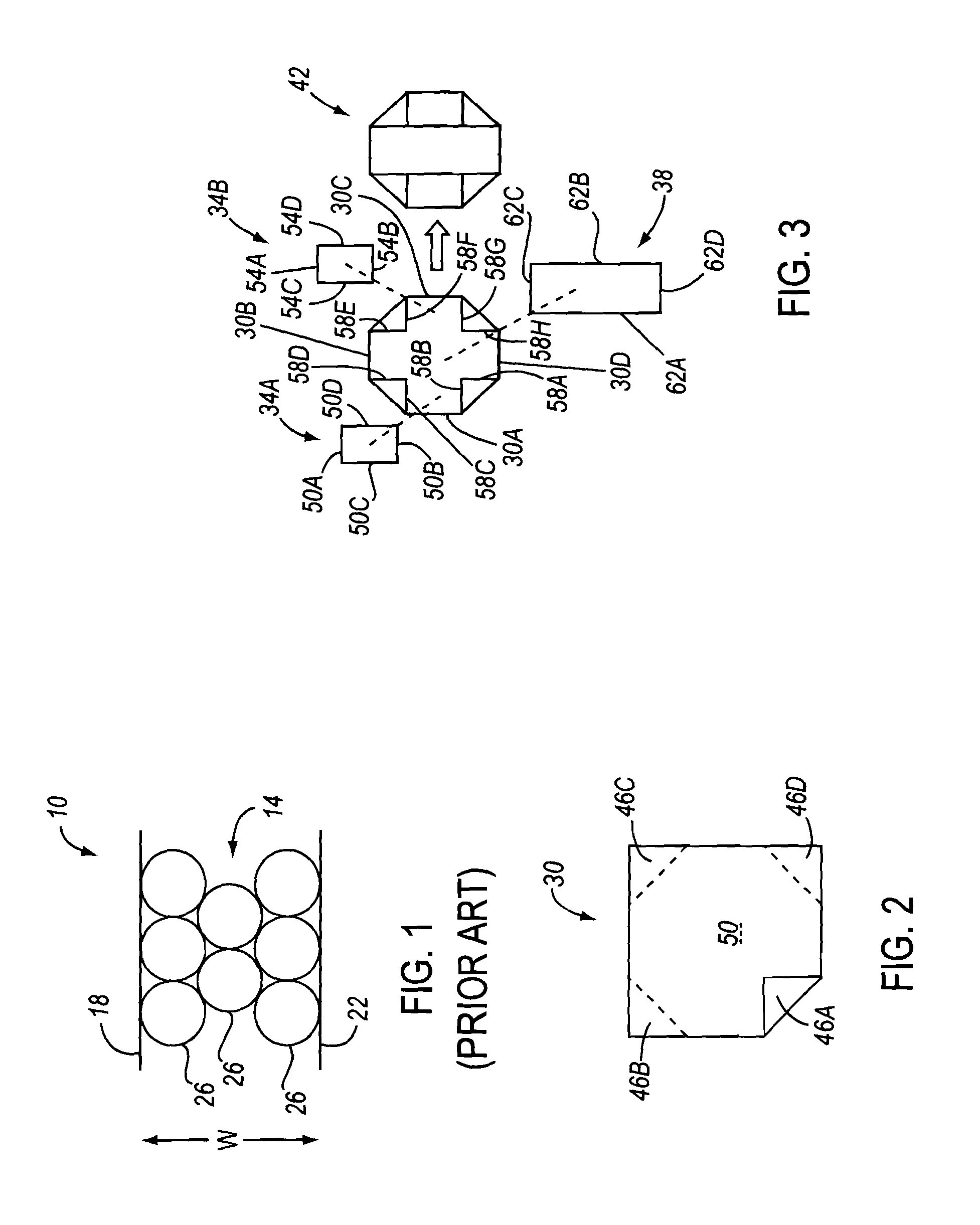Airbags formed with efficient use of materials and methods of forming such airbags
a technology of airbags and materials, applied in the field of occupant airbags, can solve the problems of reducing the deployment stability of occupants, reducing the safety of passengers, and wasting at least thirteen percent of the total available fabric, so as to improve the nesting of component parts, improve the stability of bags, and sacrifice the ease of assembly
- Summary
- Abstract
- Description
- Claims
- Application Information
AI Technical Summary
Benefits of technology
Problems solved by technology
Method used
Image
Examples
Embodiment Construction
[0031]Depicted in FIG. 1 is an example of a linear strip 10 of fabric or other material 14 from which airbag components may be removed. Strip 10 typically is, but need not necessarily be, part of a roll of material 14. Similarly, strip 10 usually has parallel edges 18 and 22 and a selected width W. Material 14 beneficially comprises fabric sufficiently impervious to air or other inflation fluid so as to allow the airbag of which it is made to deploy successfully.
[0032]Also detailed in FIG. 1 are a series of circular patterns 26 providing guidance for forming circular airbag panels. Patterns 26 are nested, or positioned, along strip 10 so as to minimize unused (wasted) material 14. Although such nesting may optimize utilization of material 14, the fact that circular patterns 26 are employed results in only approximately eighty-seven percent (or less) of material 14 being beneficially used. In particular, because each piece cut consistent with patterns 26 will have a curved, circular ...
PUM
 Login to View More
Login to View More Abstract
Description
Claims
Application Information
 Login to View More
Login to View More - R&D
- Intellectual Property
- Life Sciences
- Materials
- Tech Scout
- Unparalleled Data Quality
- Higher Quality Content
- 60% Fewer Hallucinations
Browse by: Latest US Patents, China's latest patents, Technical Efficacy Thesaurus, Application Domain, Technology Topic, Popular Technical Reports.
© 2025 PatSnap. All rights reserved.Legal|Privacy policy|Modern Slavery Act Transparency Statement|Sitemap|About US| Contact US: help@patsnap.com



